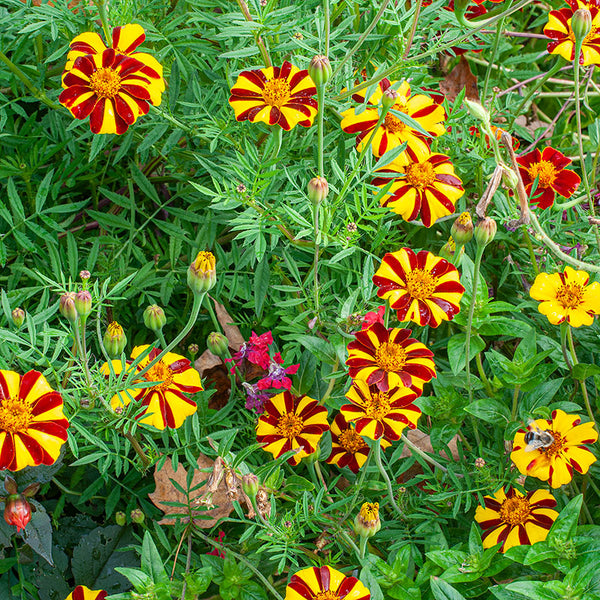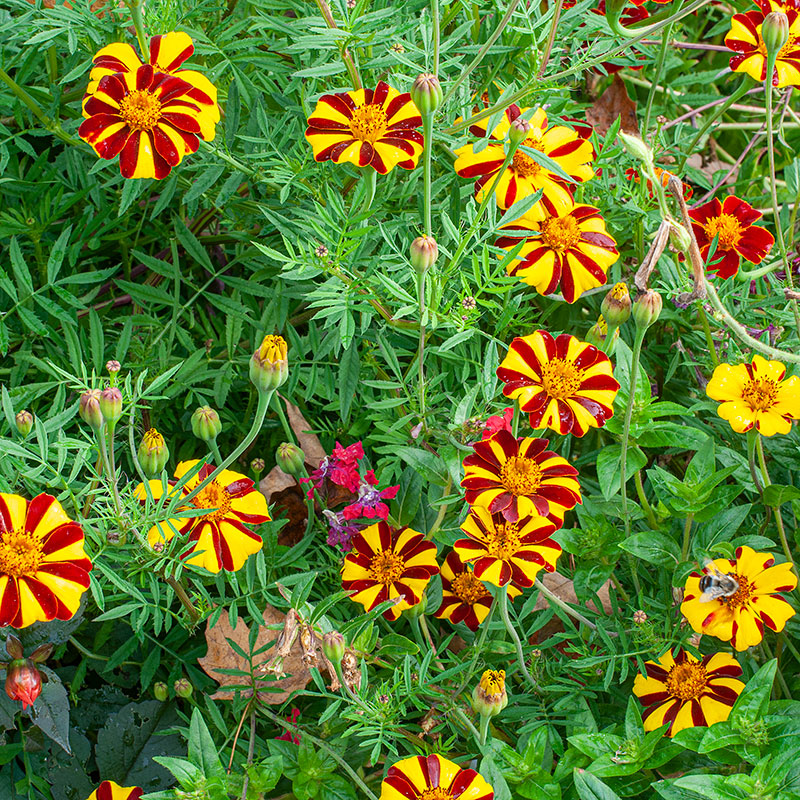SOWING INSTRUCTIONS
Seed To Bloom:
8-10 weeks
Starting Indoors:
Sow 6-8 weeks before last frost. Sow seeds thinly and keep at 65-75°F.
Starting Outdoors:
Direct sow at last spring frost date for later summer blooms.
PLACEMENT & CULTIVATION
Coming into its own in the cooler weather of early fall as the striping becomes more pronounced, marigold 'Harlequin' 's mounding, graceful habit is welcome mid-border. This cottage garden inhabitant is especially beneficial in the veggie garden, where they naturally repel insect pests and harmful nematodes in the soil while attracting beneficials. Pinch back when seedlings reach about 6" tall to encourage bushiness, and be sure to deadhead regularly.
Watering Details:
About 1" per week, though it will tolerate some drought once established.
Soil pH:
Prefers slightly acidic to neutral.
Fertilizer:
Mix in about an inch or two of compost or some organic granular fertilizer when transplanting. Flowers well with little added fertilizer, too much and foliage will be lush and flowers less abundant.
Diseases & Pests:
Be sure to space properly to increase air circulation and avoid fungal issues such as leaf spot. Japanese beetles can be hand-picked into a bowl of soapy water. If insects such as spider mites, aphids, thrips, or whiteflies are an issue, treat with an insecticidal soap.
When to Cut for Bouquets:
Harvest when flowers are fully open.
































